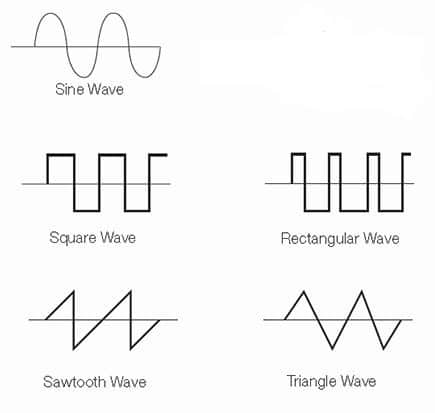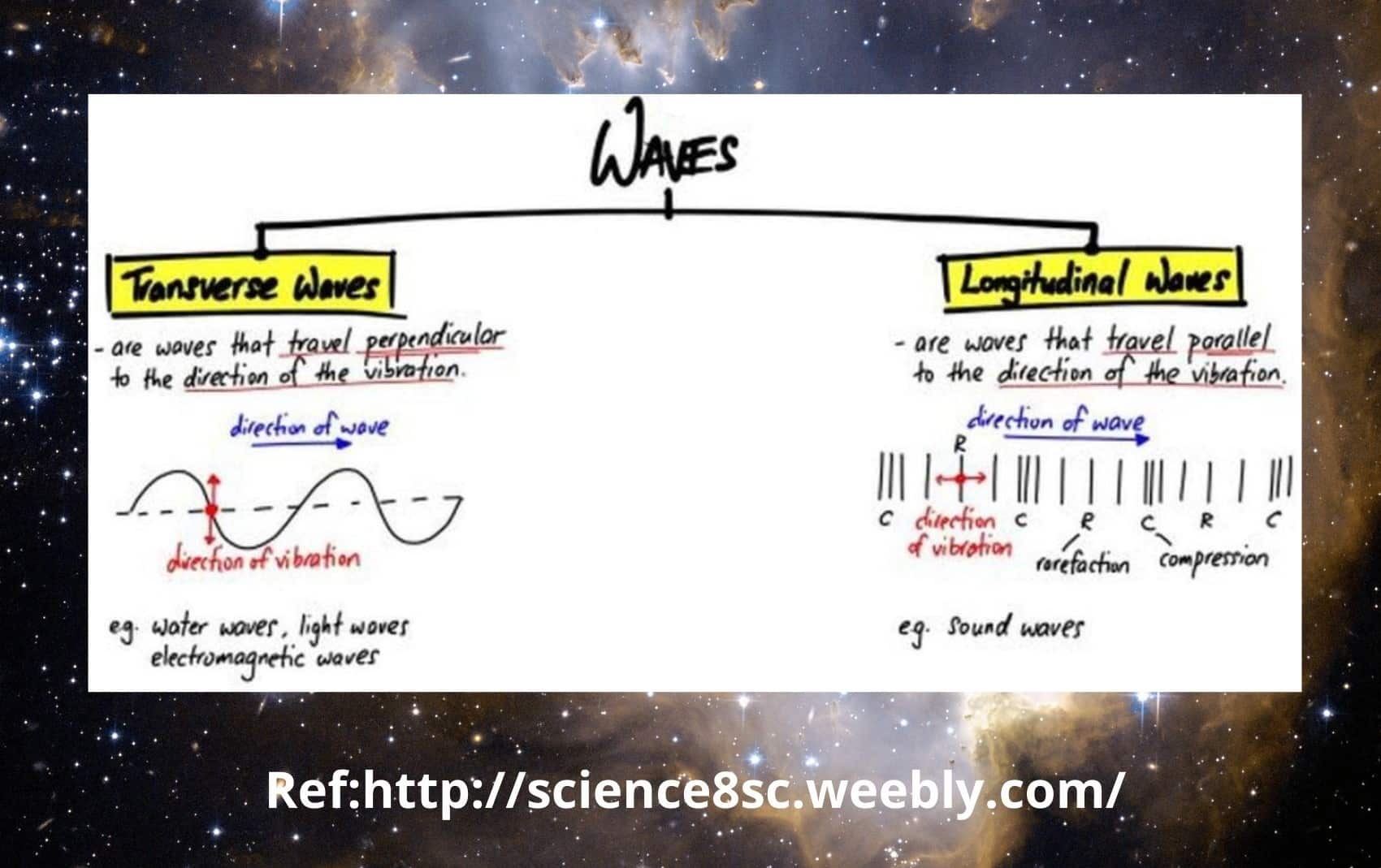The portion of the transverse waves above the mean level is known as the crest of a wave. The section of transverse waves below the mean level is referred to as the wave’s trough. The wavelength is the distance between two successive crests or troughs. Keep reading to learn more about the crest of a wave, amplitude, frequency, and types of waves.

Table of Contents
Key Points: Crest of A Wave
- Disturbance produced by the vibrating body, which carries energy, is known as a wave.
- The maximum displacement of the body from the mean position on either side of the mean position is known as its amplitude.
- A complete round trip of a vibrating body about its mean position is known as one vibration.
- The portion of the transverse waves above the mean level is known as the crest of a wave.
- The portion of the transverse wave below the mean position is known as the trough.
- The number of waves passing through a reference point in a medium in one second is known as frequency.
- The distance covered by the disturbance caused by the vibrating body per second is known as the speed of a wave.
- The time taken by the body to complete one vibration is known as the time period.
- The points in stationary waves at which amplitudes are zero are called nodes.
- The points in stationary waves at which amplitudes are maximal.
Transverse wave
A transverse wave is a wave in which particles of the medium are displaced in a direction perpendicular to the direction of propagation of the wave. For instance, consider a long and loose spring, lying on a smooth table with one end fixed. In this position, the spring does not sag under gravity. Now, if the free end of the spring is moved from side to side, a pulse of the wave having a pattern shown in the figure will be produced and it will move along the spring.
Some examples of transverse waves are as follows:
- Radio waves
- Light waves
- Microwaves
- Water waves
- A wave is produced on a stretched string.
Longitudinal Waves
The waves in which the particles of the medium are displaced in a direction parallel to the direction of propagation of waves are called longitudinal waves. Some of the examples are
- Sound waves in the air
- Waves produced in the spring
Stationary Waves
When two waves of the same period, amplitude, and speed travel along the same straight line in the opposite direction, they superimpose, giving rise to stationary waves or standing waves.
The points on the chord which do not oscillate and remain at rest are known as nodes.
The point on the chord which oscillates with maximum amplitude is known as an antinode.
Characteristics of Stationary Waves
- Stationary waves do not transport energy from one place to another.
- Stationary waves consist of nodes and antinodes.
- The distance between two consecutive nodes and antinodes is equal to the half wavelength.
- The distance between a node and its neighboring antinode is one-fourth of the wavelength.
Quick Links

Wavelength Definition
The distance between two successive crests or troughs of a wave is known as its wavelength. It is calculated in the wave’s direction. This indicates that the lower the frequency, the longer the wavelength.
Period vs Frequency
The length of time it takes for a wave to complete one full cycle of oscillation or vibration is referred to as its period. On the other hand, frequency refers to the number of full cycles or oscillations each second. The period is a time-related variable, whereas frequency is a rate-related number.
Bottom Line: Crest of a Wave
This article explains the crest of a wave and the trough of a wave.
We hope after reading the article, you are able to differentiate between the crest of a wave and trough of a wave along with the understanding of transverse waves and longitudinal waves. . If you have any questions regarding this topic, feel free to post a comment.
Related Links
Velocity Time Graph
White Light & Working Principle of Prism
Light Energy Definition
Energy of Light
Transverse waves
Stationary Waves| Definition, and Properties
Exam Related Question
| 1. | What is the crest of a wave? | The crest of a wave is the highest point of the wave above the equilibrium position. |
| 2. | What is the opposite of the crest of a wave? | The opposite of the crest of a wave is the trough, which is the lowest point of the wave below the equilibrium position. |
| 3. | What is the amplitude of a wave? | The amplitude of a wave is the maximum displacement of a particle from its equilibrium position. |
| 4. | What is the wavelength of a wave? | The wavelength of a wave is the distance between two consecutive crests or troughs. |
| 5. | What is the frequency of a wave? | The frequency of a wave is the number of complete cycles or oscillations that occur per unit of time. |
| 6. | What is the relationship between wavelength and frequency of a wave? | The wavelength and frequency of a wave are inversely proportional to each other. |
| 7. | What is the speed of a wave? | The speed of a wave is the distance that a wave travels per unit of time. |
| 8. | What is the formula for the speed of a wave? | The formula for the speed of a wave is speed = frequency x wavelength. |
| 9. | Can the crest of a wave be seen? | Yes, the crest of a wave can be seen as the highest point of the wave above the water level. |
| 10. | What is the difference between a transverse wave and a longitudinal wave? | In a transverse wave, the particles move perpendicular to the direction of the wave, while in a longitudinal wave, the particles move parallel to the direction of the wave. |
| 11. | What is the relationship between the energy and the amplitude of a wave? | The energy of a wave is directly proportional to the square of the amplitude of the wave. |
| 12. | What is the relationship between the amplitude of a wave and the loudness of a sound wave? | The amplitude of a sound wave is directly proportional to the loudness of the sound. |
| 13. | What is the relationship between the frequency of a wave and the pitch of a sound wave? | The frequency of a sound wave is directly proportional to the pitch of the sound. |
| 14. | What is the relationship between the speed of sound and the medium through which it travels? | The speed of sound is different in different media and is faster in denser materials. |
| 15. | What is an example of a practical application of the properties of waves, such as the crest of a wave? | An example of a practical application of the properties of waves is in communication technologies like radio and television. |
Frequently Asked Questions
1. What is the amplitude of waves?
The distance between the centerline (or the still position) and the top of a crest or the bottom of a trough is the amplitude of a wave.
2. What trough definition?
A crest is a point on a wave where the medium’s displacement is at its maximum. If the displacement of the medium at a certain position on the wave is the smallest, that location is called a trough.
3. Can amplitude be negative?
An amplitude can’t be negative since it’s defined as half the distance between the highest and minimum values, which can’t be negative.
4. How does water move as waves pass?
Waves are made out of energy that passes through the water and causes it to move in a circular manner. When a wave travels over water, it not only causes an orbital motion in the surface water but also causes an orbital motion in a column of water below it (down to half the wave’s wavelength).
5. What is the lowest point of a wave?
The lowest point in the wave is called the trough. The horizontal distance between successive crests, troughs, or other portions of a wave is known as its wavelength.
6. Linear motion?
Linear motion (also known as “rectilinear motion”) is a one-dimensional motion along a straight line that can be represented mathematically with only one spatial dimension. Linear motion is defined as movement along a straight path, whereas nonlinear motion is any movement that is not in a straight line.
The waves which don’t require any medium for their propagation are known as E.M waves
The waves that require a medium for their propagation are known as mechanical waves.
The portion of the transverse waves above the mean position is known as the crest of a wave.
More Interesting Links
- BCl3 Lewis Structure in four simple steps - November 1, 2023
- PH3 Lewis Structure in four simple steps - October 8, 2023
- PF3 Lewis structure in four simple steps - September 24, 2023



